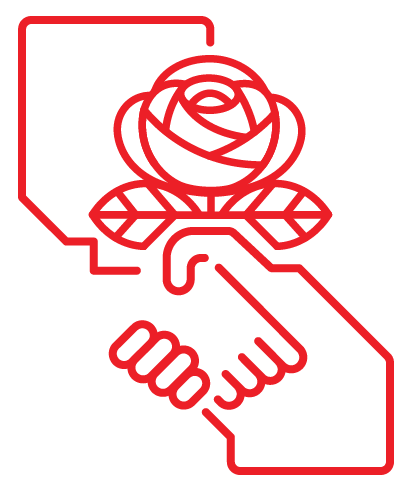Session 2 - Solidarity Forever: Unions and Socialists
This session will continue the discussion about workers and unions, and then look at some of the history of U.S. labor.
Materials for Session Two
Sections 5-8 of Labor 101: Socialism and the Labor Movement (2021) by Fred Glass (a short history of US labor)
Advance reading
0:00 – 10 minutes
I. Check in
0:10 – 15 minutes
II. What Could a Union Do?
Large Group Discussion
Prompt:
For those of you who are in a union, what has your union experience been? How has it encouraged or organized collective action?
For those of you who are not in a union, what could a union do in your workplace, or former workplace? What might people do together to improve their work experience
Key Points:
The essence of all of these situations is collective action (’concerted activity’) whether formal or informal. If possible, circle back to points of the first session.
Our goal is to assist our fellow workers to get together for collective action on our own behalf. Unions are organizations designed for collective action and class struggle so they’re a key part of how we do that.
0:25 – 15 minutes
III. Union Power and Union Democracy Pt 1
Breakout Rooms
There are two prompts, but if there are more than 10 participants consider setting up three groups.
Each group will need a moderator and a note taker who will give a 2-3 minute report.
Prompts:
Group 1: How does having a good union in the workplace (whether recognized officially or not) change the power relations between the workers and the boss? How does it change the attitudes of workers? How does it build workers’ skills for class struggle?
Group 2: Why are democracy and wide participation essential for strong unions? What are the obstacles to wide participation in the union? What kinds of internal organization, meetings and procedures promote union democracy? How does union democracy build workers’ skills for class struggle?
0:40 – 15 minutes
IV. Union Power and Union Democracy Pt 2
Small Group Report Backs and Discussion
A 2-3 minute presentation and 5 minutes of discussion on each question.
Question #1 Key Points:
Working as part of a union can create significant improvements in one’s quality of life both at work and away from work. It can mean more dignity, respect, and autonomy for the worker as well as more time for their self-development and leisure to be able to do the things that matter to them.
Workers feel more able to challenge supervisors and the company, and can do so with less risk to their jobs.
Workers learn that collective action works, that it’s how meaningful change is made, and that they can organize it.
Collective action and solidarity across workplaces, unions and communities are necessary to develop class consciousness.
Question #2 Key Points:
The degree to which there is democratic governance, rank-and-file activism and empowerment, and organized vehicles for political vision all shape a union’s degree of effectiveness and its imperfections.
Democratic participation makes it hard to conceal deals with the employer and allows for members to keep their leaders accountable.
Democracy builds active participation and consent which are necessary for united action.
Democracy builds the skills workers will need to control their union and ultimately to control society.
0:55 – 5 minutes
V. Break
1:00 – 50 minutes
VI. Labor 101: Socialism and the Labor Movement – Sections 5 & 6 – Labor History
Presentations and Large Group Discussion
Introduction: Up until now we have been largely discussing questions based on what unions do. Now we want to spend a little time discussing some examples of how unions acted in particular historical moments.
Ask the volunteers from the last session to summarize their time period and then ask for questions and comments on each.
Answer participant questions if you can; if you can’t maybe someone would like to research it for next time.
Allot 8 minutes for intro and initial reactions.
Allot 8 minutes for each section.
Sections
1900 - 1935
1935 - 1945
1945 - 1981
Since 1981
1:50 – 5 minutes
VII. Feedback
1:55 – 5 minutes
VIII. Assignments
Give date, time, and place of next session
Let participants know that in the next session, we’re going to be looking at class struggle strategies socialists have used to build unions.
Reading for next session
“Rank-and-File Strategy Is Vindicated” (1992) by Dan La Botz
Excerpt from Ch.16 of The Long Deep Grudge: A Story of Big Capital, Radical Labor, and Class War in the American Heartland (2020) by Toni Gilpin
